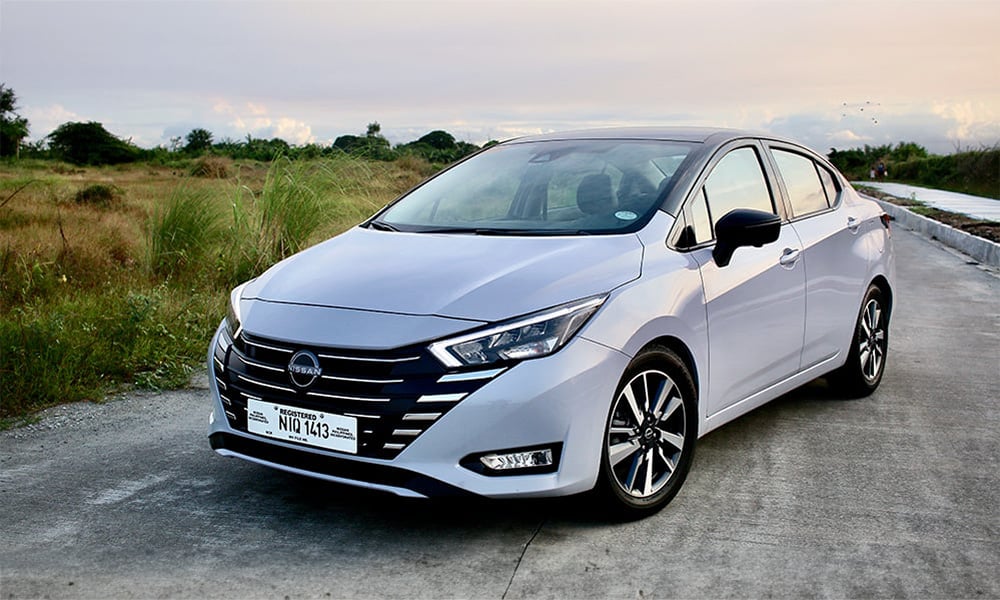
The compact-sedan segment may have well been taken over by crossovers these days, but the subcompact B-segment is still very much alive with fleet favorites like the Toyota Vios, the more upscale Honda City, and the Nissan Almera.
The latter is arguably the newest platform among the three, sporting handsome—if derivative—styling, a fairly advanced (and unconventional) three-cylinder engine, and some rather nice technological touches on this top-of-the line VL variant.
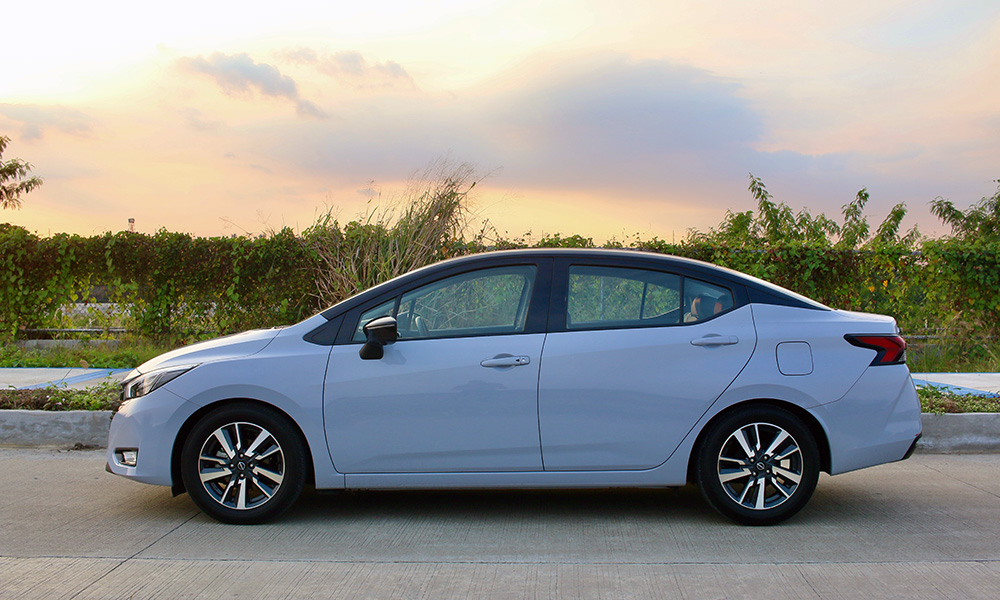
While Nissan offers a couple of standard monochrome paint choices for the VL, it also offers a two-tone option as seen on our Moon Pearl Gray (with a black roof) test unit. Conceptually, it’s a stylish and inspired paint scheme, with the base pearl changing hues depending on the available daylight. Sometimes it’s white, sometimes it’s gray.
Unfortunately, the finish on the door trim needs some work as you can clearly see orange peel. I’d just go with basic Pearl White for a more polished look.
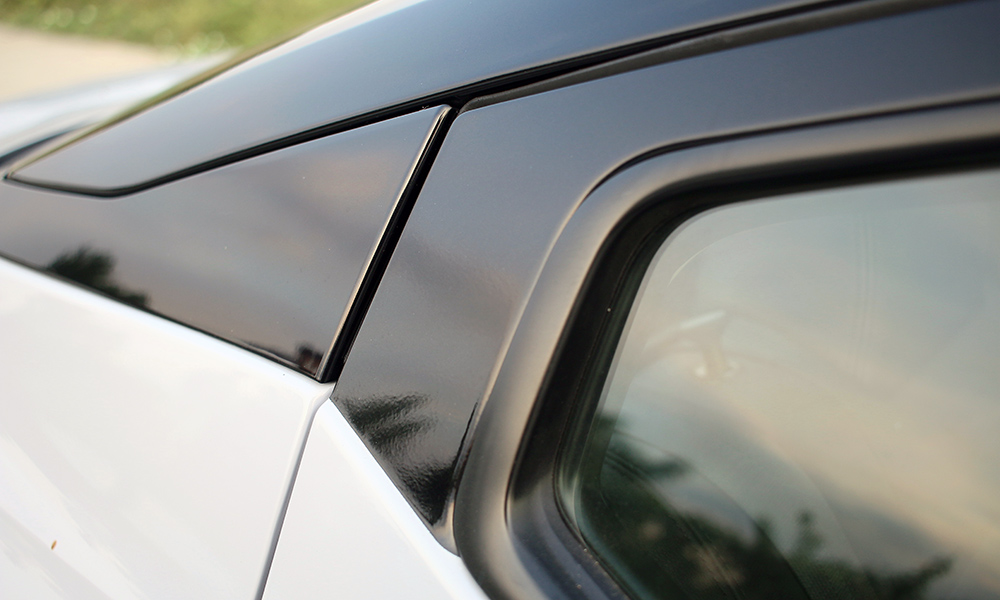
Paint blemishes aside, the Almera does have some interesting angles. Having undergone a facelift locally last year, the black-and-chrome V-motion grille pairs nicely with the upward sweep of the headlamps to create a sleek and ‘smiling’ fascia, while the asymmetric, eight-spoke wheel design is just the right mix of sporty and corporate.
A smoothly curving roofline, a window beltline that kicks up to meet the C-pillar, and organically shaped taillamps all create a cohesive and mature look that won’t appear dated after just a few years. It’s already 2024, and yet the car still looks fetching even though it was first launched in 2020.
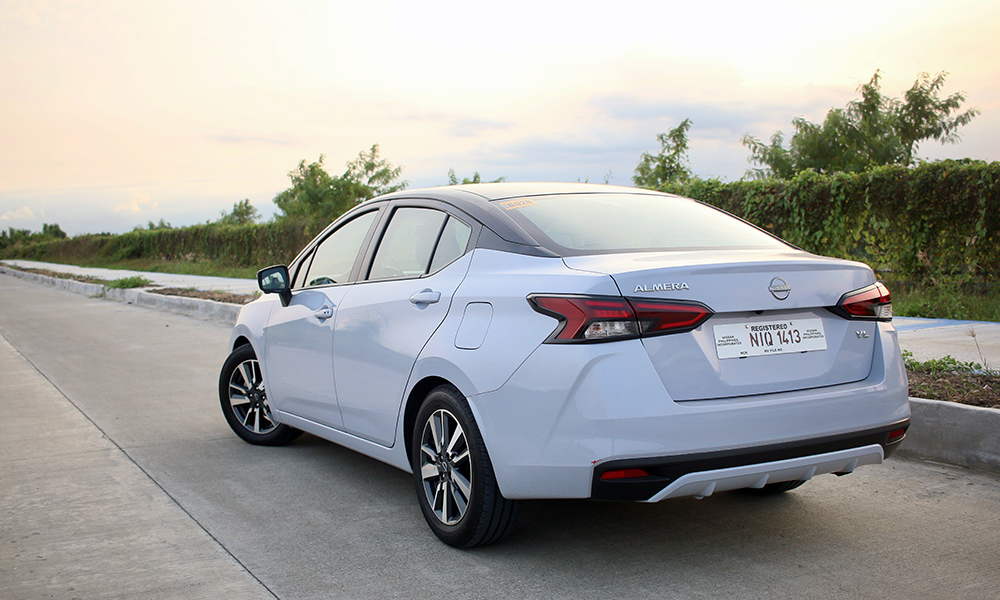
In typical Nissan fashion, the cockpit is businesslike but is also a treat for the eyes. Except for some restrained application of faux carbon fiber on the door panels, the black-and-gray treatment with a restrained smattering of buttons, switches, and a just-right-sized infotainment screen is intuitive and easy on the eye.
I didn’t even mind the plasticky door panels. The car’s tasteful palette of colors and textures is a great example of how even a budget interior can look neat. Sort of like a vintage BMW, actually.
The eight-inch touchscreen is highly legible at any angle, and isn’t prone to glare under bright sunlight. And the seven-inch instrument cluster display is similarly fuss-free. Manipulating the various menus for vehicle information or setting the driver-assist functions is done through a keypad on the left steering-wheel spoke and the instrument cluster.
There’s no redundancy for the ADAS functions on the eight-inch touchscreen, though, which would have been nice. It can get confusing choosing menus and submenus on the instrument panel.
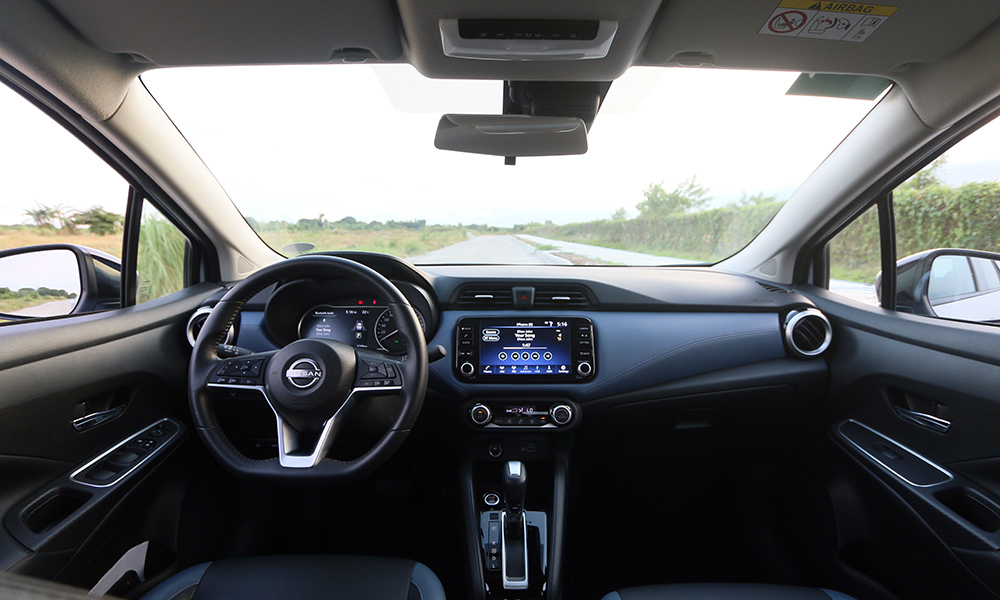
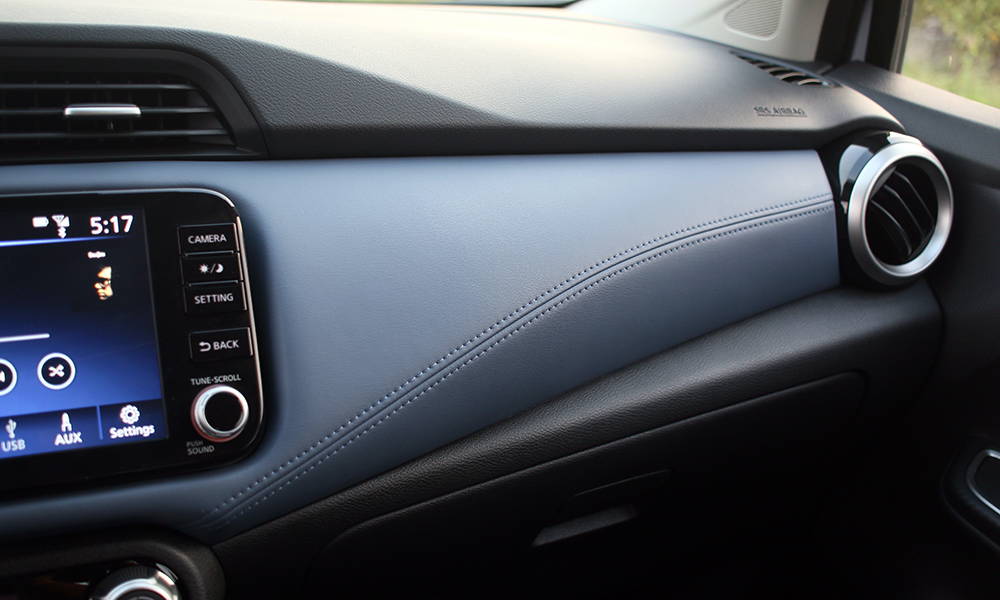
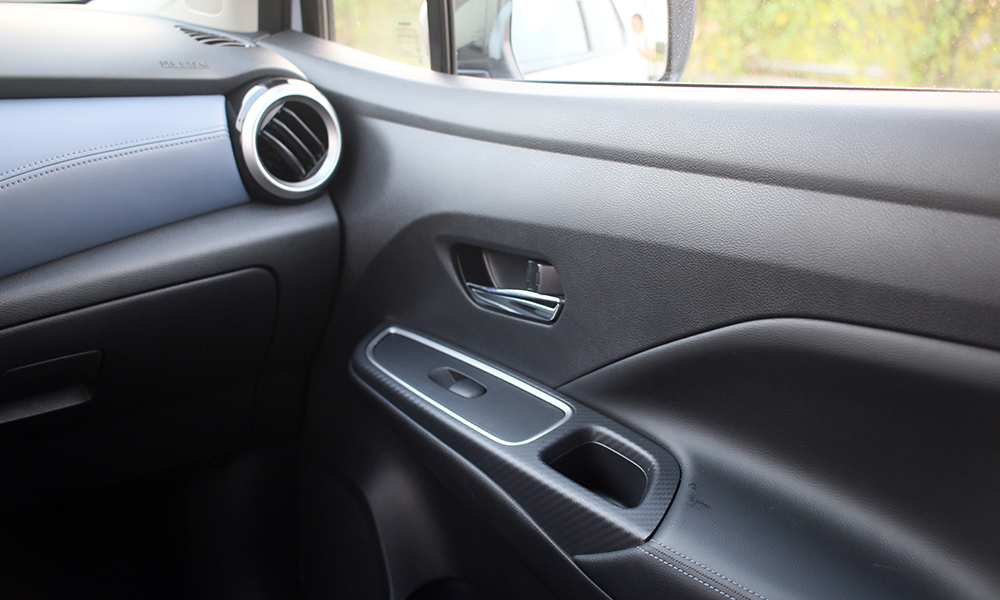
Once you’ve set everything to your satisfaction, the car proves to be an engaging machine. Alone among its competitors, the Almera’s in-line-three cylinder engine might seem outmatched on power and sophistication, but the Nissan engineers took pains to make it punch above its class. It only makes 99hp, but the low-pressure turbo more than compensates with 152Nm of torque from 2,400rpm to 4,000rpm.
Acceleration off the line and midrange is strong, smoothened out by a CVT that doesn’t have that strained feel common to naturally aspirated cars. It’s a pity Nissan doesn’t include paddle shifters or even a manual gate for the CVT, so it’s down to your right foot to tell the computer exactly what ratio you want.
With most of my driving restricted to the city, I still got around 10-11km/L, not really making an effort to go light on the accelerator. That’s because even just idling, you’re only sipping gas from a 1.0-liter engine—not a 1.5-liter like with the Honda City or Toyota Vios. It has an automatic start/stop feature, too, good for saving a few hundred milliliters.
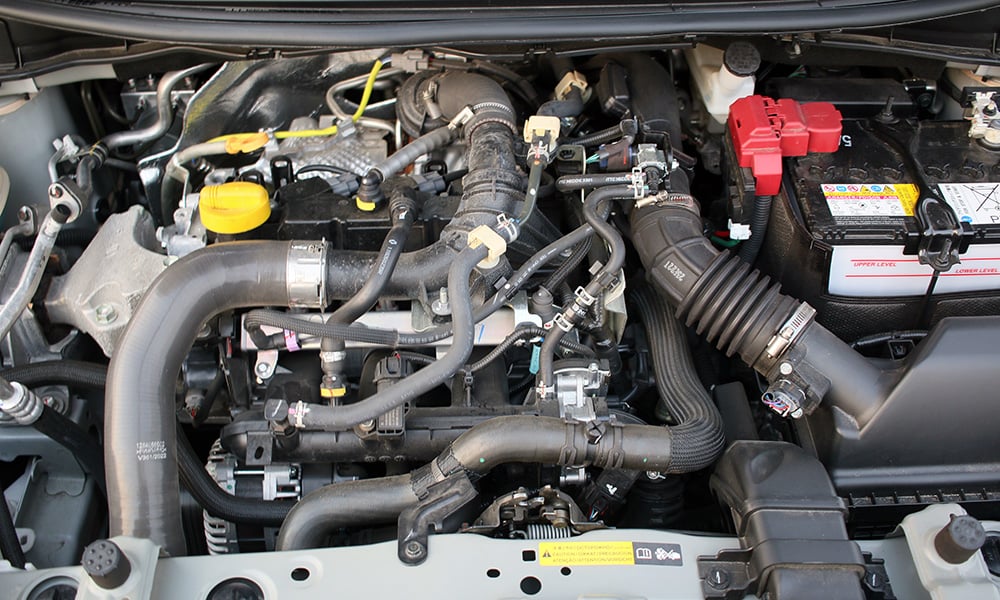
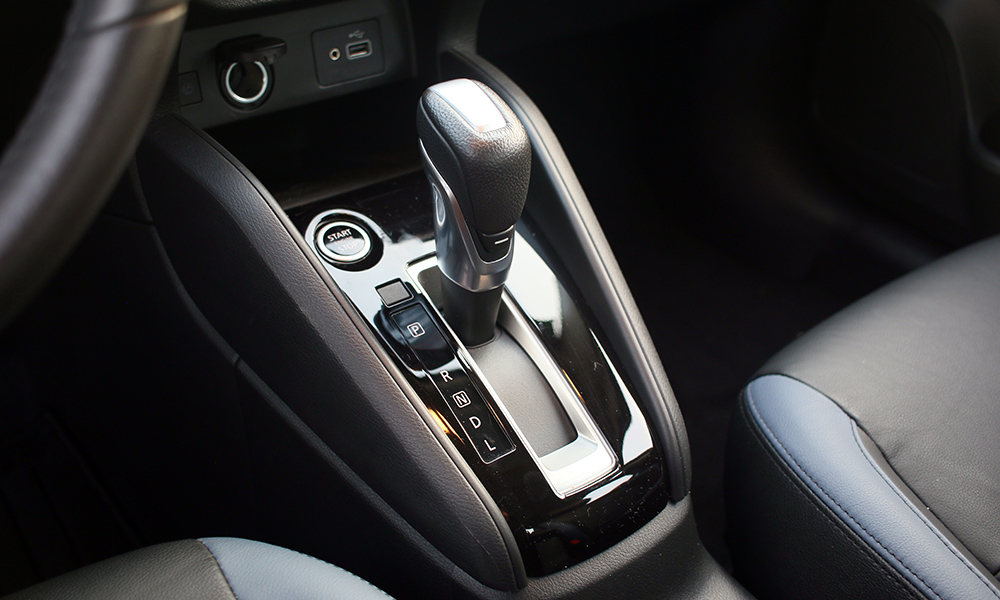
Probably my only gripe about the three-banger is its lack of soul. Aggressive application of dampeners and sound-deadening materials to kill the typical three-cylinder buzz has also reduced the engine sound to a very muted hum. You can go decently quick with an Almera; it just doesn’t sound exciting. Or anything at all, really.
A milquetoast suspension setup of front MacPherson struts and a rear torsion beam belies how well the car rides. The damping is taut without feeling harsh, aided by 16-inch, 55-series Bridgestone Ecopias. They do look a bit undersized for the car, but the supple ride quality gives the car an upscale feel. There’s no floatiness at speed, the car always feeling sure-footed and nimble.
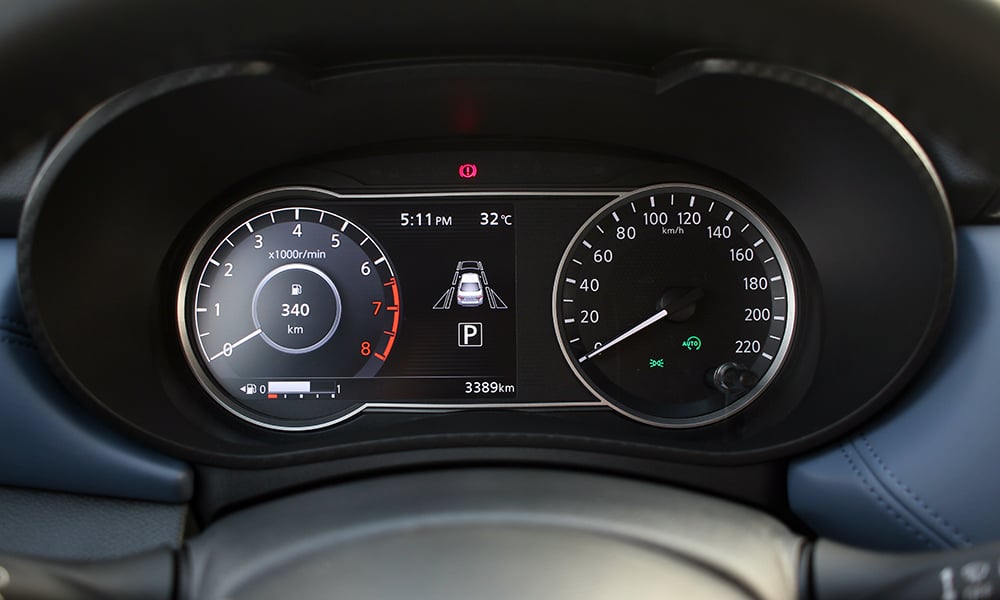
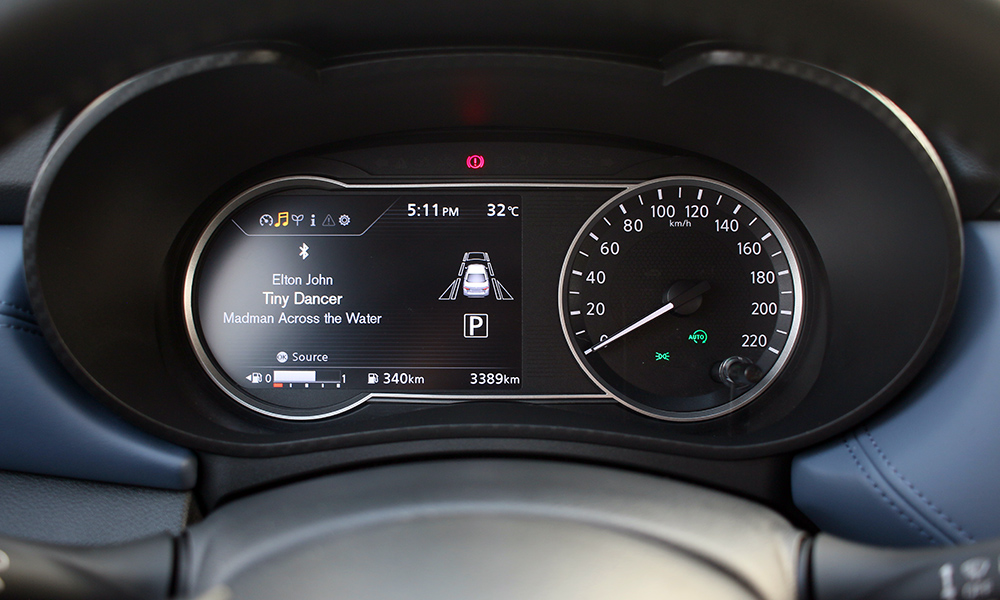
While the steering is typically Nissan-sharp, it could use a little less boost at highway speeds. Brake feel is similarly solid, with just a half-inch of mush before they bite with a progressive engagement. Purists, rejoice: There’s a good old handbrake, too! None of the e-brake nonsense here. This would be fun for a long road trip.
The seats are also worth mentioning. There are no power adjustments, but the front seats are sized just right for Asians. There’s enough thigh and lumbar support to avoid that sinking-in feeling, and the cushioning is borderline firm. Drivers over 6ft tall will find their heads brushing against the headliner, though.
I’m 5’8”, and with the seat at its lowest setting, there is only about an inch and a half left of air between the top of my head and the roof. The back seat nominally seats three average-sized adults, but two is more ideal.
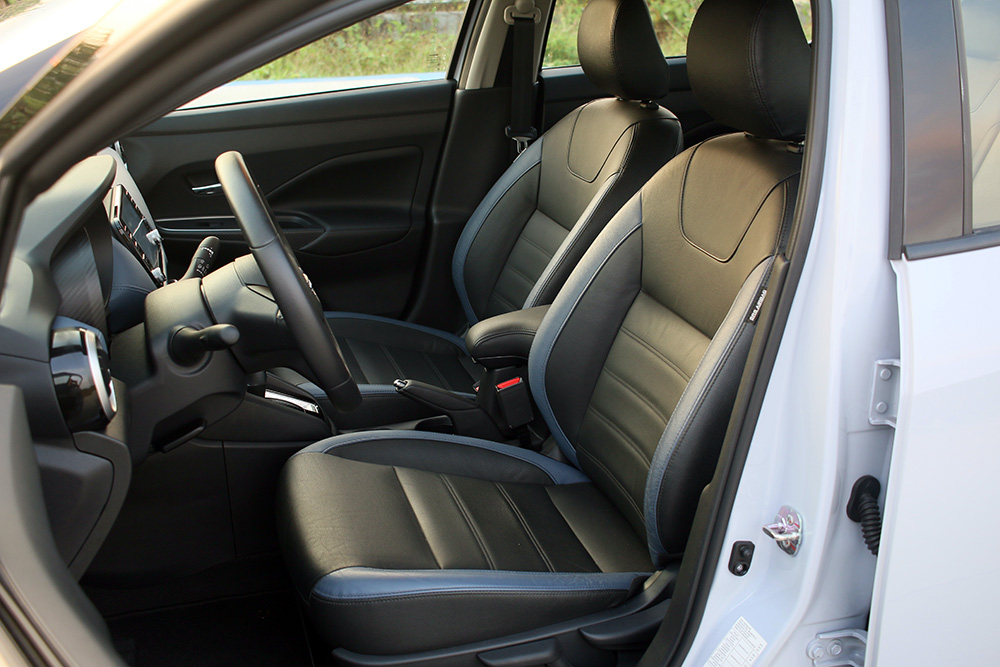
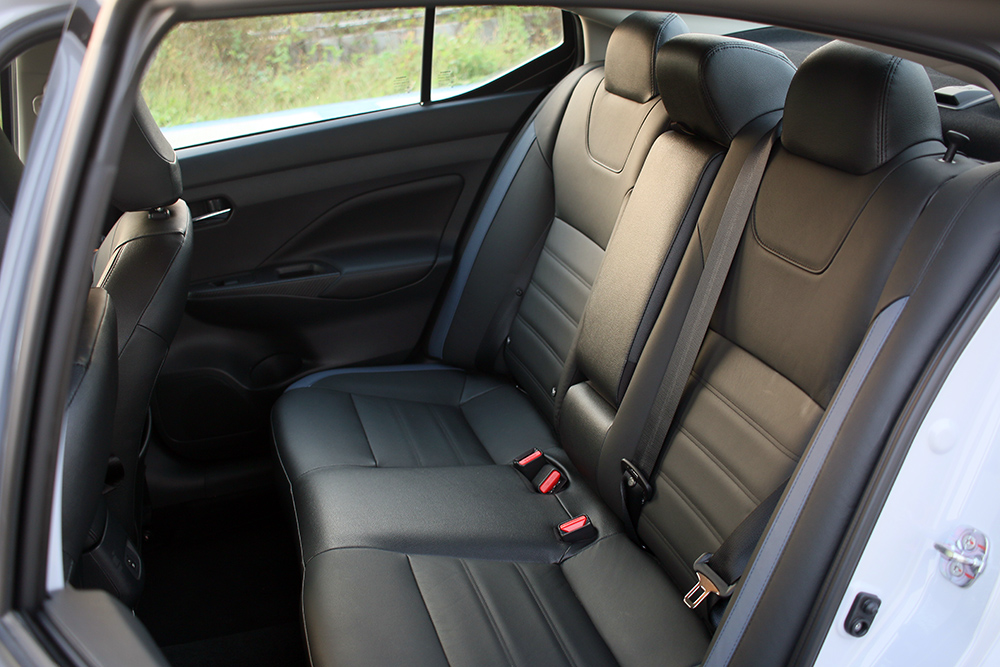
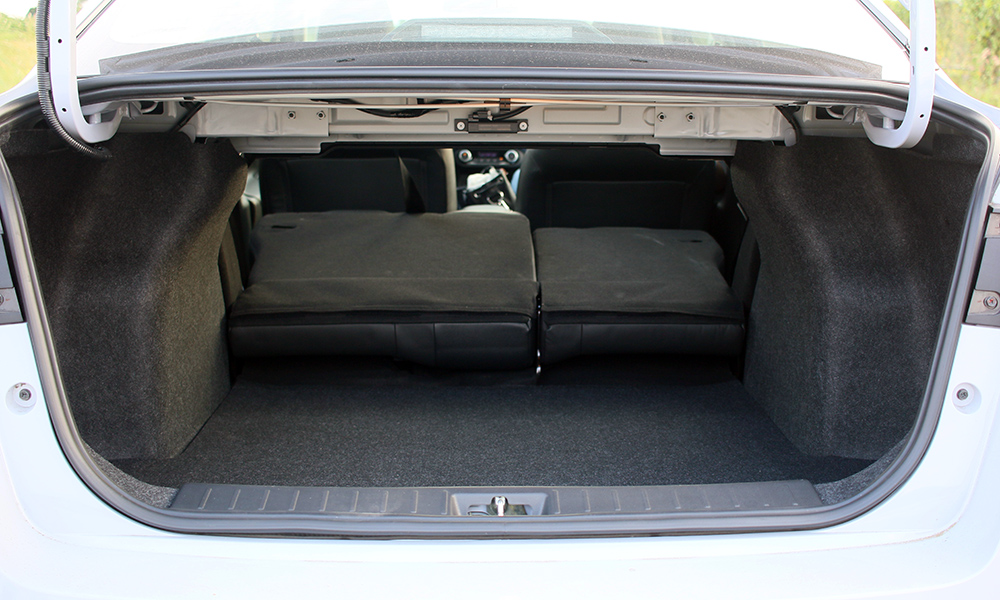
This being the VL, what you’re really paying for are the advanced driver-aid systems. I used to pooh-pooh these things, having cut my teeth on 1990s and 2000s cars without these electronic nannies. They’re worth the added cost in this age of distracted driving, though.
The 360° camera system with its Moving Object Detection feature is very useful for backing into a tight spot, as well as saving myself from contorting in the seat to see behind me (I’m not that flexible these days).
The driver aids include auto emergency braking, automatic high/low beam, lane departure warning, blind spot assistance, and forward collision warning. All pretty useful, and they do earn their keep, especially on days when you’re extra tired and your reaction time may not be that quick.
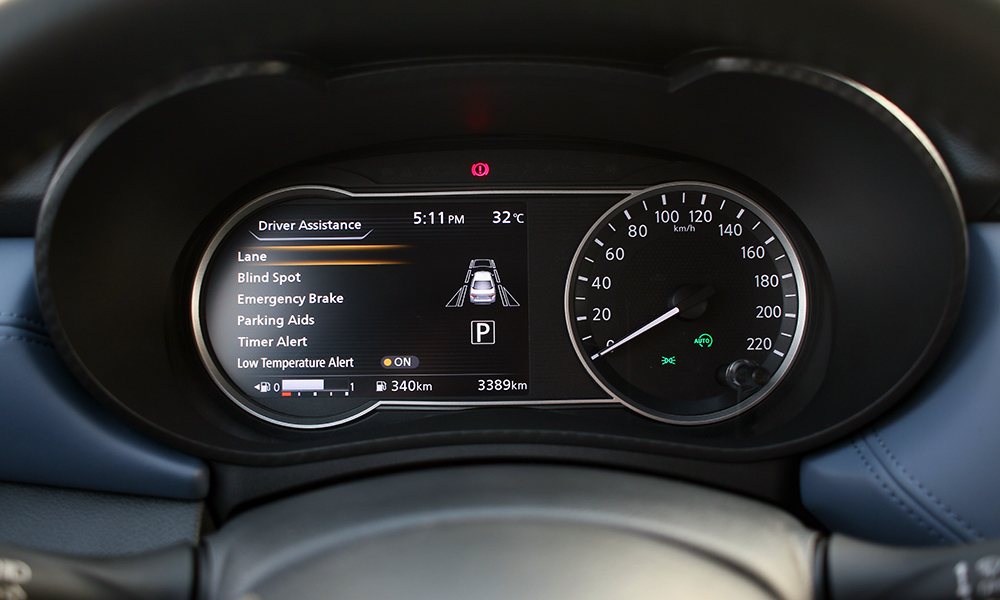
Do you really need all these things? If you’re a competent driver, not really. But if you log long hours behind the wheel, have even a mild addiction to your smartphone and keep glancing at it in traffic—Anti-Distracted Driving Law be damned—then yes, they could help prevent you from getting into trouble. If they help prevent you from ever needing to deploy all those airbags (front, side, and curtain), then they’re worth their weight in gold.
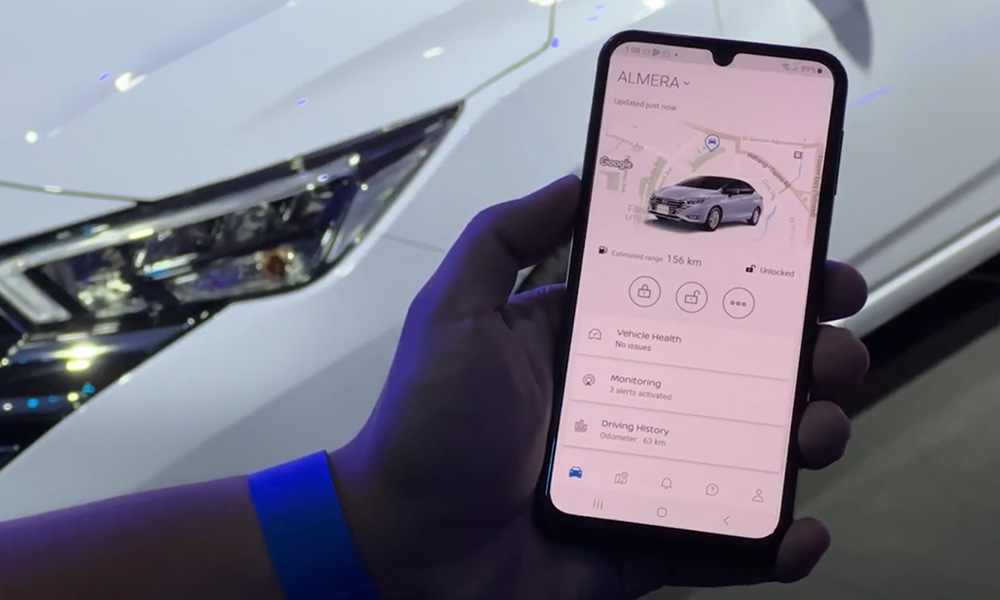
Finally, the VL comes with the NissanConnect service. As demonstrated by Nissan at a press event a few months back, this app-based service lets you unlock the doors, start or kill the engine, and set speed and zone alerts; reminds you when it’s due for servicing; and will even notify you if the vehicle has been involved in a collision.
Useful if you plan to lend this car to your kids and want to set boundaries. Just the collision notification feature alone will be valuable to any parent. There’s also a big, red “SOS” button on the ceiling. Press it and it will connect you to a Nissan Emergency Response Specialist who will address your concern like call for the nearest ambulance. You’ve got a potential lifesaver here.
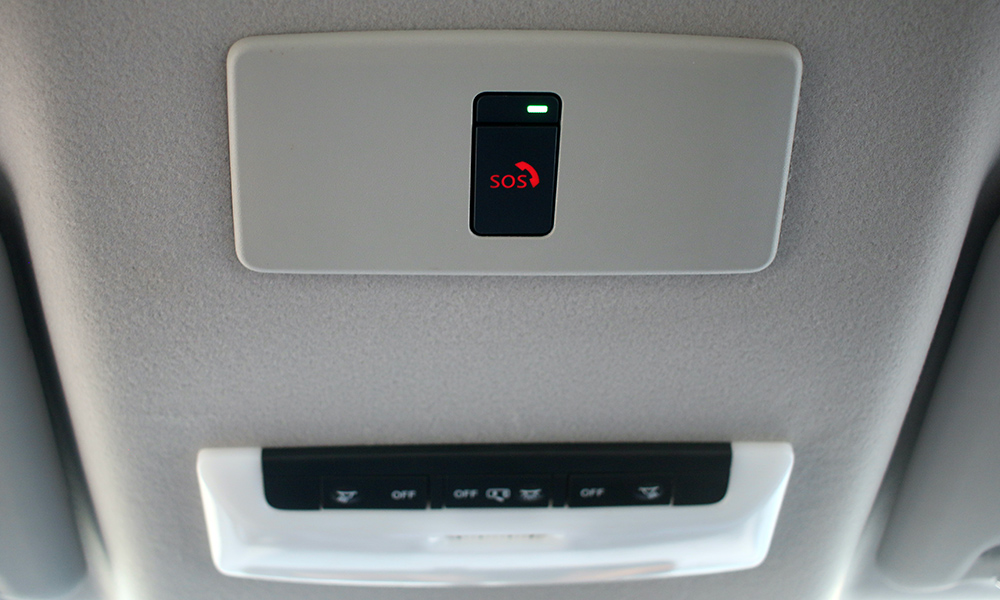
Priced at P1,149,000, it’s not a screaming bargain like the larger and punchier GAC Empow or MG GT, but it’s competitive with peers like the City and the Vios. A five-year/150,000km warranty should give further assurance that it’s a worthy investment.
If a techy, fuel-efficient, and good-looking subcompact is in your future this year, the Almera VL should be on your short list.
NISSAN ALMERA VL
| Engine | 1.0-liter turbocharged three-cylinder gasoline |
| Transmission | CVT |
| Power | 99hp @ 5,000rpm |
| Torque | 152Nm @ 2,400-4,000rpm |
| Dimensions | 4,495mm x 1,740mm x 1,460mm |
| Drive layout | FWD |
| Seating | 5 |
| Price | P1,149,000 |
| Upside | Smooth and torquey drivetrain. Refined handling. Classy interior. Useful and unobtrusive driver aids. |
| Downside | Uneven paint finish. Punchy engine deserves a manual mode for the CVT. |

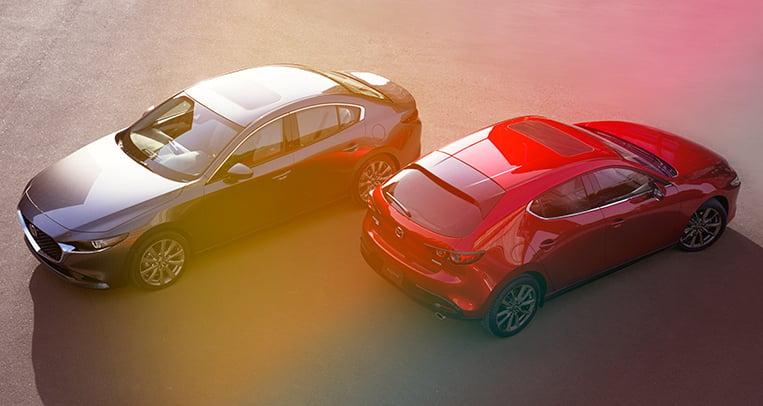
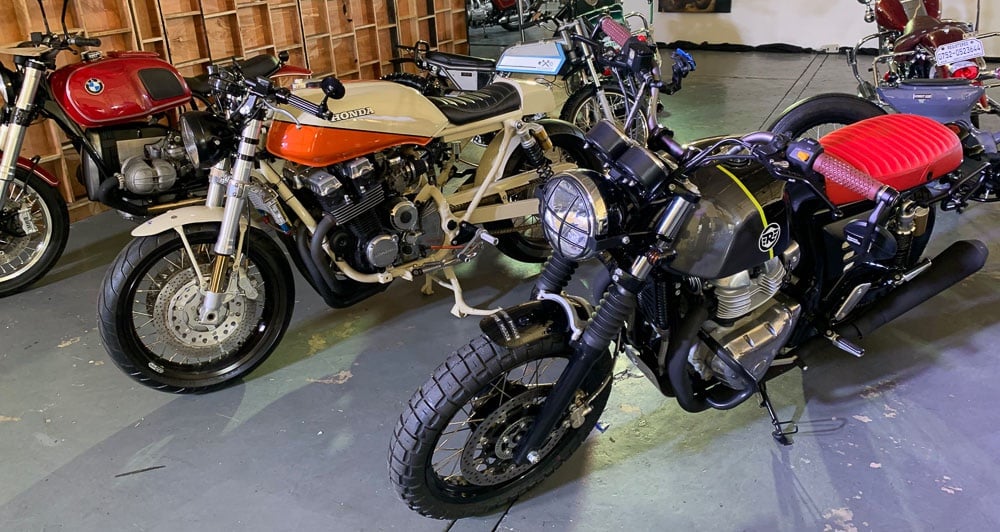
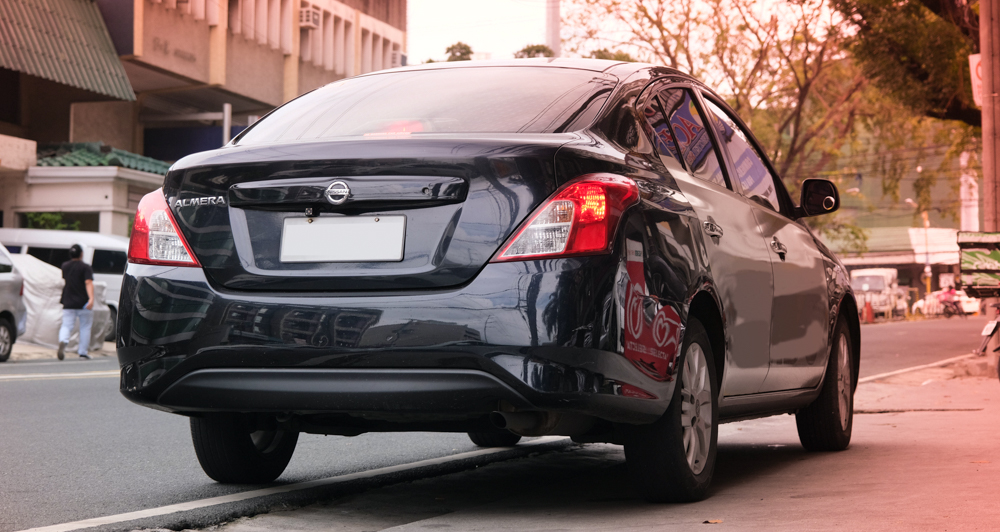
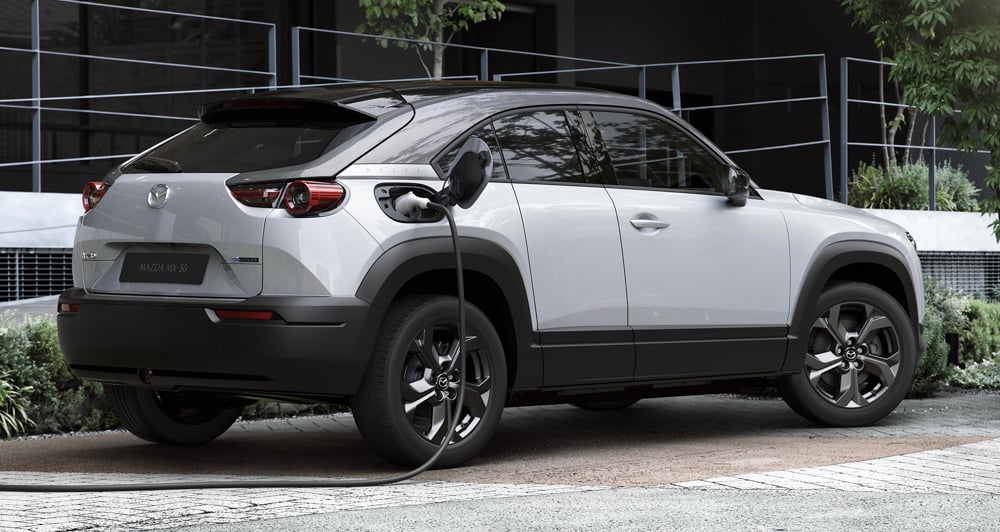
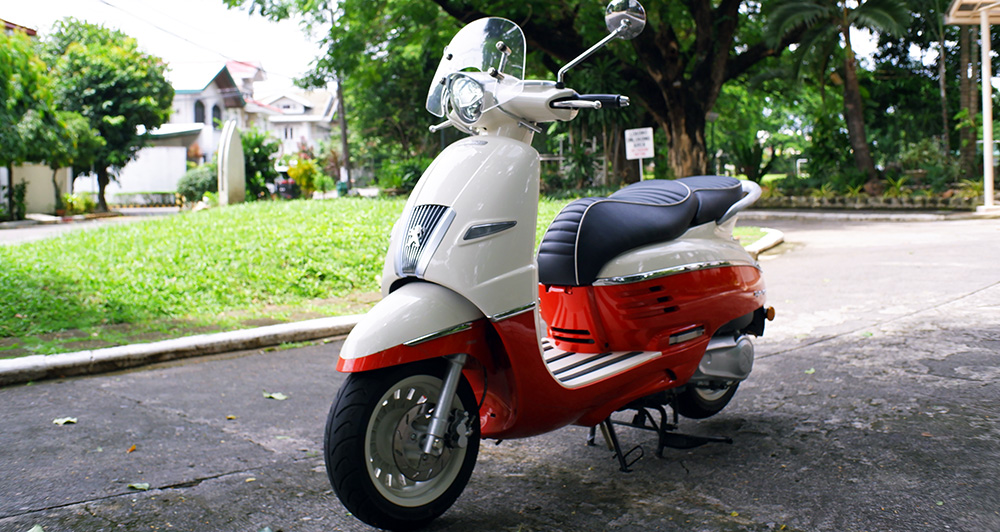

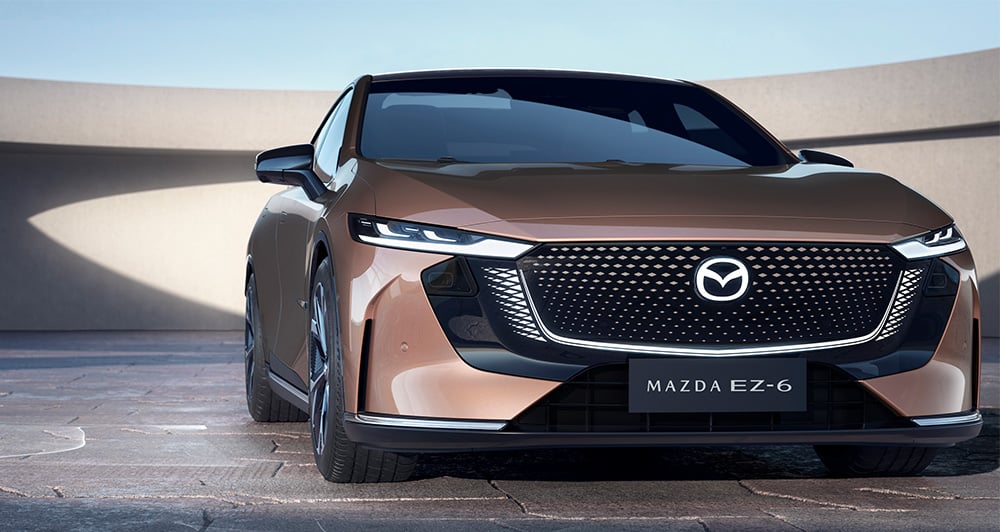


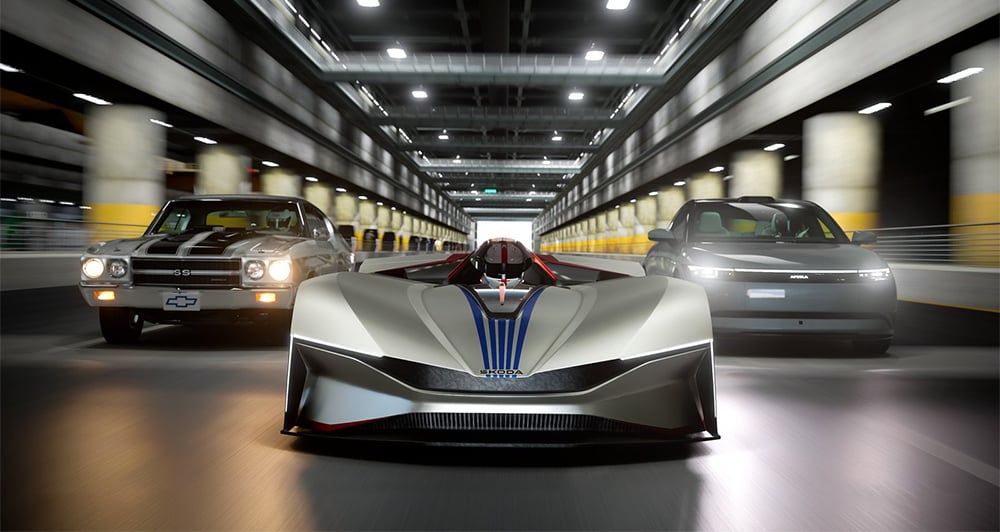
Comments